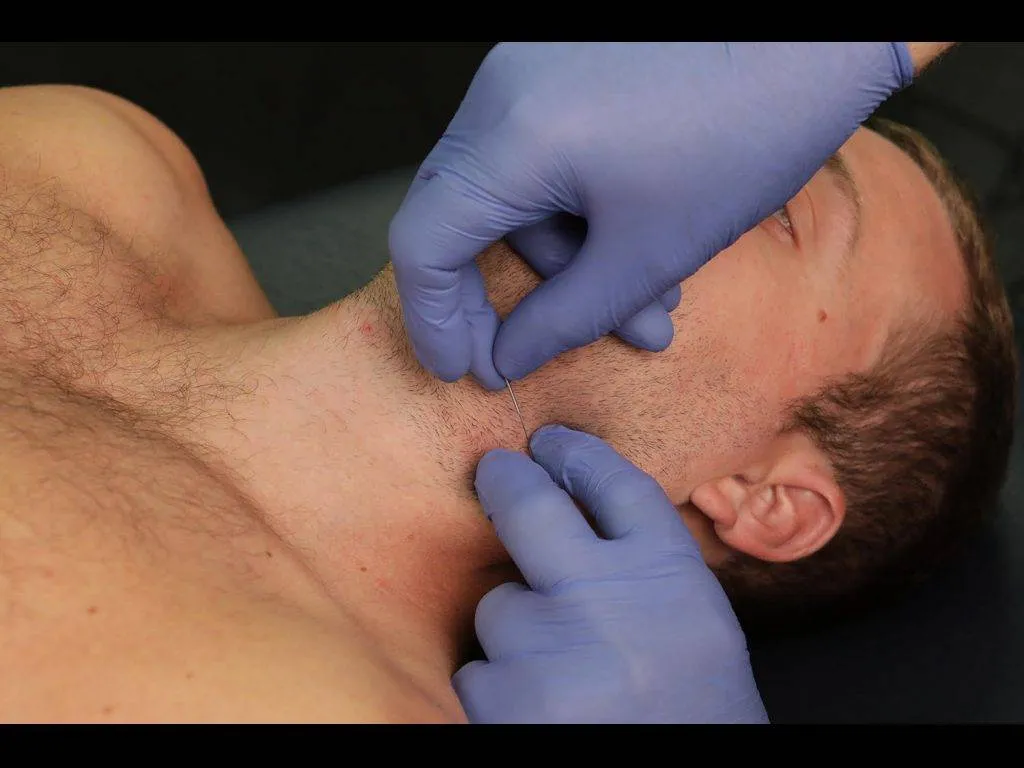Dry needling is a treatment that uses a fine needle to relieve pain, reduce inflammation, and promote healing in the body. Physical therapists, chiropractors, and licensed acupuncturists often employ it.
When a trigger point relaxes, it immediately reduces pain and imbalance within the muscle. It may also improve circulation by allowing oxygen to reach deeper into muscles.
What is a Trigger Point?
Trigger points are knotted fibers in the muscles of the skeletal frame that can cause intense pain. They develop due to over contractions, injuries, strains, or trauma.
They may be superficial (near the surface) or deeper within muscle fibers. Furthermore, they may be latent (not painful unless stimulated).
Muscles with shortened and tight trigger points can restrict motion by inhibiting relaxation, decreasing range of motion, and weakening strength; they may even cause referred pain.
Functional dry needling can treat muscle trigger points to release them and promote healing. Studies have demonstrated that dry needling can reduce muscular-skeletal pain and increase mobility in many patients.
What is Needling?
Dry needling is a type of acupuncture focused on the flow of energy or Qi. Physical therapists use it to treat pain and movement impairments. It has become part of modern Western medicine and its effectiveness has been scientifically supported through research.
Trigger points are muscular knots caused by muscles contracting and becoming stuck, also known as “knots.” These knots can cause intense muscle pain for months or refer to other parts of the body.
Chronic knots in your muscles can activate nerves and send pain signals to your brain, leading to chronic discomfort.
Dry needling breaks this cycle of chronic pain by directly accessing and relaxing a trigger point. This improves blood flow and circulation, helping carry away acidic wastes while providing oxygen and nutrients to the muscle to heal.
How is Needling Done?
The procedure involves inserting a needle through the skin into the affected tissue to activate healing. The micro-tears caused by the needle prompt the body’s natural defenses to work, bringing nutrient-rich blood to the site and aiding tissue repair.
Dry needling is administered by a licensed physical therapist or acupuncturist. It differs from wet needling in that it uses hollow-bore needles to deliver corticosteroids, anesthetics, sclerosants, botulinum toxins, or other agents. Dry needling has proven to be an effective treatment for many conditions.
Your provider will examine you to determine whether dry needling is suitable for you. They’ll ask about your pain history and perform a comprehensive physical exam to confirm whether you are an appropriate candidate for this technique.
What is the Goal of Needling?
Dry needling relieves muscle trigger points that cause pain, restricted movement, and/or tightness. Depending on how severe and persistent the issue is, it may take multiple sessions before results are seen.
Physical therapists commonly employ dry needling and other manual therapy to address muscle, joint, and spine pain. It’s generally seen as a safe, minimally invasive solution.
Dry needling relieves myofascial trigger points (MTrPs) that may cause pain elsewhere in the body. It also helps address motor end plate dysfunctions, decreasing muscle tension and expediting rehabilitation.
If you’re interested in learning more about dry needling and other physical therapy services, visit Direct Orthopedic Therapy and contact our team of specialists through our contact page. We also offer mobile physical therapy for your convenience.



